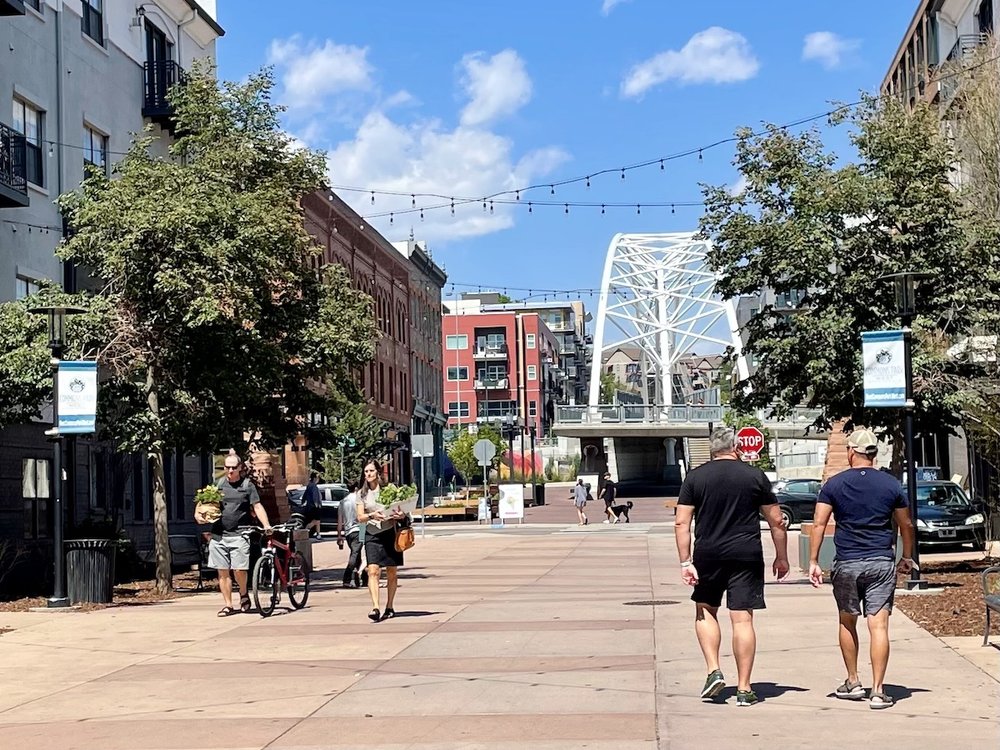This post was originally published on 15 Minutes City
Highland, Denver; WalkScore = 85 | Dan Luscher
It is plain to see that the United States has a severe shortage of homes in walkable neighborhoods. But let’s get specific — how do we really know that this is the case? The evidence falls into two categories: price and preference.
Price
Homes in walkable neighborhoods are expensive. They carry a 34-41% price premium per square foot compared to homes in car-oriented suburbs, according to Smart Growth America’s 2023 Foot Traffic Ahead report.
Economist Joe Cortright found that a single additional point of WalkScore is worth $3,500 in additional home value, and that the walkability premium has been increasing over time.
This price premium is not because homes in walkable neighborhoods cost more to build. Daniel Herriges, formerly with Strong Towns, has pointed out that “the cost premium for compact, mixed-use neighborhoods is largely a function of artificial scarcity. Fifteen-minute neighborhoods, and the kinds of housing that work well in them, are not expensive to create or maintain. They often have high real-estate values only because they are very popular and we haven’t built enough of them in the last few decades.”
Cortright concludes the same: “We haven’t been building new walkable neighborhoods in large enough numbers to meet demand; nor have we been adding housing in the walkable neighborhoods we already have fast enough to house all those who would like to live in them.”
Bloomfield, Pittsburgh; WalkScore = 92 | Dan Luscher
Preference
Surveys consistently show strong demand for walkable neighborhoods.
-
A 2023 National Association of Realtors survey found that 53% of Americans would prefer an attached dwelling in a walkable neighborhood to a single family home in a less walkable area.
-
A 2023 Pew survey found that 42% of Americans would prefer a community with smaller homes but walkable amenities.
-
Former Rice Kinder Institute director Bill Fulton pointed out in a February 2025 blog post that “most public opinion surveys find that about half of Americans would prefer to live in a smaller house in a more walkable neighborhood.”
But how many Americans actually live in walkable neighborhoods?
-
Per Smart Growth America’s 2023 Foot Traffic Ahead report, 6.8% of Americans live in “walkable urban places.”
-
Research done in 2020 by walkable communities developer Culdesac found that 8% of Americans live in neighborhoods with a WalkScore of at least 70 (which WalkScore defines as “very walkable”).
So over 40% of Americans want walkable urbanism and less than 10% actually have it. In other words, demand outstrips supply by a ratio of 4:1 or more!
DUMBO, Brooklyn; WalkScore = 98 | Dan Luscher
The solution: more homes in walkable places (duh)
Economists would call the price premium “revealed preference” and the survey data “stated preference.” Both point to the same crystal-clear conclusion: there is massive unmet demand for homes in walkable neighborhoods in the United States, on the scale of tens of millions of homes.
That’s why one of the core principles of the 15-minute city framework is ubiquity. If we build a few more walkable neighborhoods, they will continue to command a big price premium. People will (continue to) associate walkability with gentrification, with neighborhoods that are exclusive rather than inclusive. We need to go big — we must create many, many, MANY walkable places, and build much more housing in existing walkable communities. America’s huge undersupply of housing in walkable neighborhoods demands a proportionate response.





0 Comments